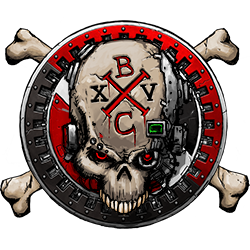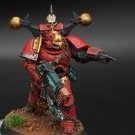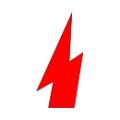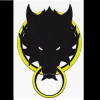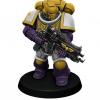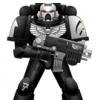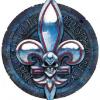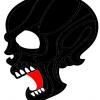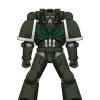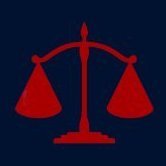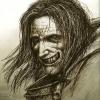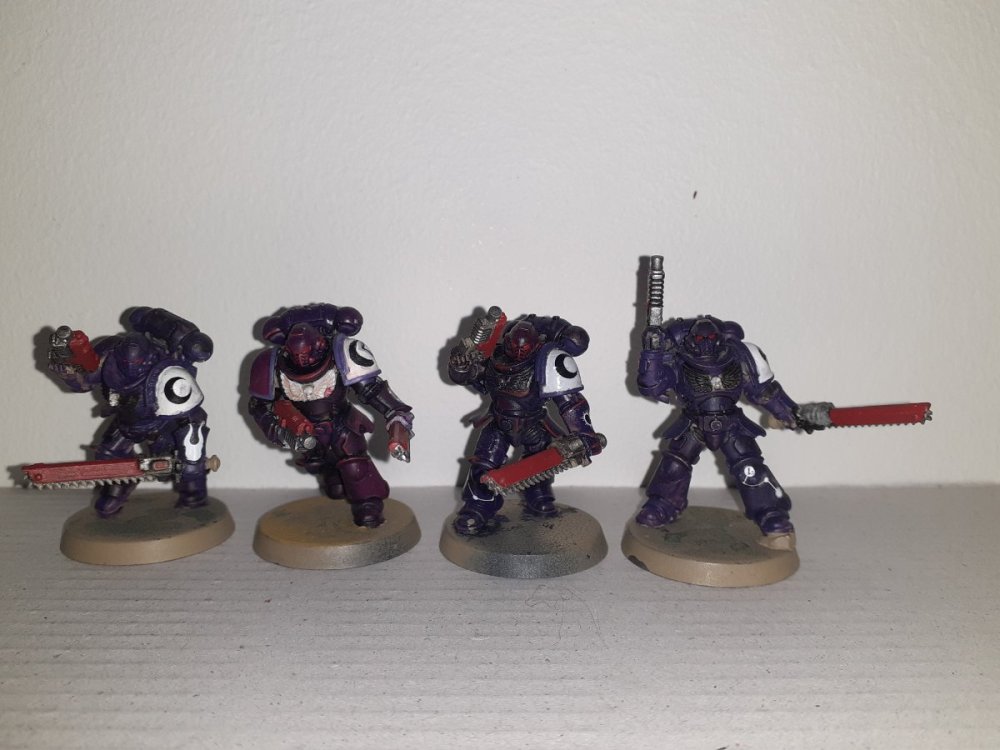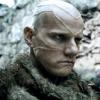Search the Community
Showing results for tags 'White Scars Successor'.
-
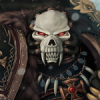
Falcon's Claws Primaris Incursor
Algrim Whitefang posted a gallery image in Adeptus Astartes / Legiones Astartes
From the album: White Scars Homebrew Chapters
Pictured Above: Falcon's Claws Primaris Incursor Sabajun Sull, 'Noble Falconer of the Stormbolt Rift', 6th Zuun ('Brotherhood of the Ebon Knives'), 9th Arban (Close Support Squad).© Algrim Whitefang
-
- Custom Art
- Custom Character
- (and 9 more)
-
For the Great Khan! I've got a couple of pals that aren't getting on with 10th edition as they much prefer what I'd call "analog" rulesets. I recommended playing an older ruleset and we all were drawn to 4th edition as a couple of us got in with the Battle for Macragge box and based on a poll on this site and elsewhere, 4th looks good to go. So far we have: Orks, Necrons and Grey Knights. I have several 40k armies already but I'm a big fan of keeping armies separate for differnet game systems and I have a box of firstborn marines in a box (including some RTB01 vehicles) in varying stages of disrepair so I figured they'd be great to jump in with! I'm a big White Scars fan and the halved scheme of the Storm Lords is a classic and I feel like I'm at a point in my painting that I can give a halved paint scheme and notoriously difficult colours a go. I'm also looking to upgrade my GS work, I think some furs and fetishes would work really well on these guys. I'm not too sure which Brotherhood I'll be taking them as but I'll be doing all their helmets Yellow and have their company markings on their kneepads. It's not codex adherrent but G-Man will never find out! I usually like to build a small list first, build the models for that list and then go from there so: The 4th ed codex has a really cool system for divergent chapters where you can mix and match benefical traits as long as you take drawbacks. The White Scars ones are listed as: Basicially how you'd want to build a White Scars army anyways! True Grit and Counter Attack seem to be pretty great to be honest so I'll definitely be taking them at higher points levels! I'll be building the tac squad in the next week and starting to get some paint down too
-
-
- Storm Giants Chapter
- White Scars Successor
-
(and 1 more)
Tagged with:
-

Falcon's Claws Armorial
Algrim Whitefang posted a gallery image in Adeptus Astartes / Legiones Astartes
From the album: White Scars Homebrew Chapters
"Confounding the foe is one sure way to victory. When this strategy is pursued, war becomes a game of opposites and expectations." — Jaghatai Khan, Khagan of the V Legiones Astartes, Tenets of War The Falcon's Claws are an ancient and ferocious 3rd Founding Successor Chapter created from the lineage of the proud and savage lineage of the White Scars. Created in the wake of the Great Scouring, the Chapter took their namesake from the V Legion's ancient auxiliary order known as The Burgediin Sarhvu or 'Falcon's Claws', a small Order composed of veteran warriors that excelled as hunters and forward scouts on the battlefield, well known for their expertise in survival and the quiet elimination of enemy commanders. When this Chapter was formed at the dawn of the 32nd Millennium, they carried on the traditions of their order, continuing to stalk the battlefields across various warzones, delivering swift and brutal death to those that would dare oppose Mankind's manifest destiny as the rightful inheritors of the galaxy. Read More: Falcon's Claws© Algrim Whitefang
-

Falcon's Claws Storm Walker
Algrim Whitefang posted a gallery image in Adeptus Astartes / Legiones Astartes
From the album: White Scars Homebrew Chapters
Pictured Above: Falcon's Claws Zadyin Vokyer ('Storm Walker') Kia'kun Subah, 'Silent Windspeaker of the Alabaster Tempest', assigned to the 6th Zuun (Brotherhood of the Silver Knives).© Algrim Whitefang
-
- Custom Art
- Custom Character
- (and 9 more)
-

Falcon's Claws Karaoghlanlar
Algrim Whitefang posted a gallery image in Adeptus Astartes / Legiones Astartes
From the album: White Scars Homebrew Chapters
Pictured Above: Falcon's Claws Kharaoghlanar (Destroyer Cadre) Qos-Khagah, temporarily assigned to the 3rd Zuun ('Stormlord Brotherhood'), 2nd Arban (Fire Support Squad).© Algrim Whitefang
-
- Custom Art
- Custom Character
- (and 14 more)
-
In the Urn, Awaiting Cremation: The Ash Phantoms Origins Opening Notes, Memoirs of Hasheel Having been granted the Chapter Master's blessing on the condition that I do not leave the fleet, I begin my record of the Ash Phantoms. The Regimental Commissar on Murkaia said that the Chapter was strange. There was an uncomfortable shift in his eyes when he spoke of them. The way they would stare, the repeated, identical vox transmissions. I doubt even I would have known what to make of them. But I never would have expected this. It is no wonder the trail goes cold with them. The ill-fated nature of the Ash Phantoms’ known history, and their particularly grim outlook has led some to believe that they bear the “Curse” of the 21st Founding. At the very least the Chapter has its constant struggle for survival in common with much of the 21st Founding. Other clues, specifically fragments of surviving service records, and redactions with the seals of unknown Inquisitors, suggest that the Chapter may have been founded during the Dark 13th Founding. Credible histories of the Chapter are scant, and the Chapter has intermittently been completely lost to the Imperium at large, even presumed destroyed, only to appear fleetingly in the records of a Guard detachment or another Astartes strike force from whom they answer a call for aid. Only recently, due to the efforts of a curious Inquisitor, has earnest documentation of this Chapter begun. For their part, the Phantoms look past the dismal fate that looms persistently before them, towards what glory they can purchase for the Emperor with their blood. Many of them are resigned to the not the idea that they will never know their history, due in large part to a catastrophic genetic flaw. The Catalepsean Node produced by their gene-seed is flawed in such a way that it interrupts the normal activity of the cerebrum, destroying the marine’s ability to form new memories, and in the worst cases, shutting the brain down entirely. Though they diligently submit tithes in the hopes of finding a cure, or shedding some light on their origins, all they have been able to ascertain for sure is that their genetic material comes from the White Scars. Home World Mysteries to Themselves, Memoirs of Hasheel The only records they appear to have are associated with visions of the Librarium. They are full of endless, vague references that could mean anything, few attached to actual events. The most tempting to the Chapter itself, and of course to me, is that of the home world they supposedly once had. But no real evidence exists in their records to confirm the veracity of that belief. They do not even know the secret they keep. The Chapter is largely confined to it’s small fleet, which stays closely connected, lest the flaw separate them forever. This is the only home the Phantoms know, but there are long-running rumors of an ancestral home world which have proved a subject of frequent debate among them. The belief hinges on ancient references made in their records to “the urn” from which they came. What few Chapter records have endured little more than cryptic notes left by Librarians centuries past, some little more than gueses, and all fighting against their affliction to leave the Phantoms with some sense of legacy. The notion that a homeworld might exist, a place containing records of their early history, or perhaps even untainted gene-seed, is one that almost every marine entertains, for at least as long as they can remember it. The Chapter’s Librarium is perpetually divided between trying to prove the existence of a home world and quelling the rumor and its distraction once and for all. Recruitment Refusal to Fade, Memoirs of Hasheel Since learning the extent of their condition, I have wondered to myself why they insist on preserving their dwindling line. I do not raise the question to them, as I have my doubts that I would survive such a line of questioning, but also because I cannot say for certain they are wrong. On one hand, is such an existence not a waste of Imperial resources? On the other, the Emperor gave them life, and they have come this far enacting His will. And of course, I can’t let them fall before I’ve found what I need. The flaw never ceases to exact its toll on the Phantoms. Losses in almost any given engagement far outstrip the average of what almost any other chapter experiences, while sudden and unpredictable brain death, often among the eldest marines, chips away at their numbers even off the battlefield. On top of already staggering casualties, each brother in the Chapter is only one faulty vox transmitter from being forgotten in the area of operations and being listed MIA. The only counter the Phantoms have against their attrition rate is aggressive recruiting. Even here, though, the Phantoms face obstacles. The unease they tend to instill in those unfamiliar with their peculiarities, especially civilians, makes willing recruits difficult to come by. On the other hand, forcefully abducting recruits puts them at risk of censure at best and an excommunicate traitoris edict at worst. At the best of times, they have only been able to steady their numbers, but not grow them, and now their recent association with the Inquisitor Hasheel has made the Phantoms all the more cautious about how and when they recruit. If any notification has reached the Phantoms of the Ultima Founding or the advent of Primaris Astartes, it has failed to be recorded and, apparently, been forgotten. Consequently, there are no Primaris units or equipment in the Chapter as it stands. Combat Doctrine Still Angels of Death, Memoirs of Hasheel I understand now what Commissar Gelbright meant. Their genetic issue manifests clearly in their method of war. They are among the more brutal Astartes I have seen in combat, and with no apparent sense of self regard. They throw themselves headlong into melee, perhaps assured that by doing so they won’t hesitate in battle when their flaw strikes. Though I now have context for their repeated call-outs, they remain somewhat disconcerting, like a battlefield of violent echoes. I believe I will be able to use it to my advantage. Muscle memory is the only art that the Ash Phantom’s truly know. Though they remain formidable in combat, their inability to recall the points of finesse of anything from martial technique to a tactical maneuver result in decidedly brutal conflicts. For this reason the Chapter eschews weapons that require more careful control. Power mauls and thunder hammers are taken in lieu of swords, and flamers and heavy bolters see more use than lascannons or sniper weapons. The Phantom’s seek to end battles quickly and decisively to protect their numbers, but the finer reflexes that would be necessary to pilot the rapid transports that would complement this strategy are beyond them. Bike squadrons are their risky compromise, granting them speed and maneuverability, if not to the degree they would like, and at the cost of exposure and more limited access. Most marines begin and end each engagement on foot. The minimal use of transports stems not only from the inherent challenge in piloting them, but also from the delayed reaction a battle brother may suffer upon emerging into the battlefield as his memory fades. A marine already on the battlefield is much more likely to continue fighting without missing a beat. The frequent use of flamers and plasma guns is a side effect of the battle brothers often finding the enemy closing the distance without being able to remember how. The Chapter’s heavy support comes primarily in the form of Predator tanks, which are much more forgiving than faster vehicles when the flaw strikes. Despite having a pair of Dreadnought sarcophagi, no marine has ever been interred, due to a simple, brief note in their records warning succinctly: “No Dreadnoughts.” Organization Self Injury, Memoirs of Hasheel Completely unheard of, a Chapter led by initiates. I can see the lines along which they reasoned, now that I understand their affliction better, but I am inclined to believe that they would reconsider their organization if they could but remember what happened to the 8th Company, or the battle at Udonanai Hive. It is clear from these wasteful losses that the Phantoms strive on borrowed time. I can only hope to finish my work before that time expires. The Ash Phantoms attempt to follow the Codex Astartes as one of the few forms of guidance they can rely on. The Chapter has only five companies to field, though the Scout Company sees very little combat and it is there that first signs of divergence from the Codex become apparent. Uncharacteristically for a Chapter of Astartes, the Ash Phantoms’ Scouts are held in equal regard with full battle brothers, and are perhaps disproportionately regarded as the Chapter’s legacy. About three fourths of the Chapter’s initiates serve in the Scout Company. The remainder, always chosen from the most promising recruits, form the Chapter’s leadership. The Chapter Master, Company Captains and many of the Sergeants are young marines, chosen for demonstrating the greatest balance between natural skill and lasting memory. Their lack of experience is viewed by the Librarium as a necessary cost for maintaining that vital command structure. However, the inexperience of these young marines has cost the Phantoms dearly on multiple occasions. As marines grow older, they descend the ranks and are sorted by the skills they retain. As a result their Devastator and Scout veterans are exceptionally skilled, but are accompanied by some of the youngest Sergeants to ensure their skills are applied to the right targets. No marine has been known to have any conflicts with demotion, though this is likely because no brother remembers being demoted. The battle brothers of the Chapter identify each other by rank only, both on and off the battlefield; though some marines can remember the names and faces of brothers that came from the same recruitment and training pool, it is otherwise fruitless to try learning the identity of their brothers. Beliefs Acceptance, Memoirs of Hasheel Total resignation is the only way to describe their attitude towards their condition. I was personally surprised how aware they are of the costs their condition has incurred on the Chapter. Rather than a chain of despair, these beliefs are an anchor for them. They see it simply as their lot, that has no bearing on the Emperor’s Will. Though I am inclined to think them forsaken, I cannot help but respect this commitment. If only they’d let me speak with the recruits, before the subtler details of their philosophy are lost, philosophy which may illuminate part of that which I seek. The body of the Chapter Librarium is small, as Psykers have proven more likely to succumb to the most severe symptoms of the flaw. The Chapter’s records are likewise limited. Current Librarians surmise that attempts to record the Chapter’s contemporary history were abandoned centuries ago. Instead, they took heavily to divination. Though it is frequently impossible to distinguish between visions of the past, present and future, they could at least be recorded in real time. The interpretations of these cobbled together visions make up the bulk of the Chapter’s histories. From among these emerged the first rumors of a Chapter Homeworld, and each time they are reviewed the debate rekindles, some elements calling for expeditions to pursue every lead that could uncover this lost world, while other elements bristle at what they perceive to be a false hope that should be striken from their history. The factions maintaing both positions are as impermanent as any Ash Phantom’s memory.There is another dark facet to the Librarium’s methods. The Chapter maintains the bare minimum of serfs required to support their operations, as visions of the Librarium, both modern and ancient, have cast a pall of doubt on the loyalty of serfs. The matter has occasionally become so serious that it has resulted in a complete purge of the Chapter’s serfs. It has never been established what decetion they are guilty of or what threat they pose; the Phantoms simply cannot accept the risk from the humans closest to them, who can remember things that the Astartes cannot. The Chapter’s recruits and scouts hold special importance to and spend a great deal of time with the Librarium. The last memories that the Phantoms hold onto are those prior to beginning the implantation process, so as much as possible of the Chapter’s identity and knowledge is imprinted on them before then, and because of their longer memories, they are better able to help the Librarium focus its efforts over time. The Chapter’s enduring beliefs revolve around their duty to the Imperium. Great honor is viewed in a martyr’s death, and it is considered a noble release from their affliction. To complete this release, after a marine’s progenoids have been extracted, his body is burned in his armor by means of incinerators built into each suit. Until another marine dons the armor, it will hold the ashes of the brother who died in it in a very literal sense. The ashes will still be inside when the new marine first puts it on. Over the centuries the original blue and orange trimmed suits of armor have acquired gray stains, concentrated around the hands, feet and torso where the ashes often filter out. Unable to form any sort of significant attachment to their own brothers, and resigned to the fact they will neither remember nor be remembered, the Phantoms exhibit an eerie level of detachment both on and off the battlefield. They are equally somber regarding the Imperium at large, content in knowing they have a very simple role to play, and this at least, they could never forget. Gene-seed Private Examination, Memoirs of Hasheel They would surely kill me if they knew I had taken a gene-sample, but it was worth it. My preliminary analysis shows markers that one does not find in stable White Scars genes. Some of them are familiar to me, but not from that legion. Others don't seem natural at all, though. Each discovery is a confirmation of my suspicions I must check the Librarium again. The secrets lost to the Ash Phantoms, left by my forebears, are ever more within my grasp. The Chapter’s genetic material is almost completely whole, save for the corruption of the Catalepsean Node. The level of degradation varies from marine to marine, lapses occurring anywhere between every few hours to every couple of days. Initiates suffer the least, some able to recall anything from an entire week or more, while the most veteran marines may lose their memories in a matter of minutes. To the brothers of the Ash Phantoms it makes little difference, for once gone, the past is lost forever. Battle-cry If a war cry existed at some point, it has been lost to the Phantoms.
-
Greetings! I am building my first ever 40K army, though I am an experienced painter and WHFB player. I like the White Scars, but always have to put my own spin on things, so I will be creating a successor chapter: the Storm Brothers. I will be following the WS codex 100%, so only painting/modeling tweaks. My original thought was purple and gray, with yellow highlights, but the test model came out too dark for my taste. So I have used the awesome SM Painter to try out a lighter gray, more of it, and more yellow. I like this version a lot- I think it will paint well, show up strongly on the table, but not be too "busy". Opinions welcome! http://www.bolterandchainsword.com/sm.php?b62c=@iagtx_hnsaQ.i2SsX@@@@@@@i6hFq@hozqSiakk7.@@.hozqS@.@__.@__@.@i3rau_@____@___hozqShozqSiakk7..@@@hozqS@@@@@@hozqShU25M&
- 827 replies
-
- bikes
- DIY Chapter
-
(and 2 more)
Tagged with:
-
My 1st Dark Hunter. 5th co.
- 24 replies
-
- Dark Hunters Chapter
- White Scars Successor
-
(and 1 more)
Tagged with:
-
I am new to the game, and am interested in creating an army based on my favorite legion, the Mantis Warriors. I was wondering if it would be possible to take the Mantis Warriors with the White Scars chapter tactic, as they are a successor legion. I also have a few specific characters I would like to represent in my army, so does anyone have suggestions for a list incorporating these guys- Khoisan Neotera- Chapter Master Ahazra Redth- Chief Librarian Shaidan- Not sure exactly what this guy is but I loved him in Warrior Brood Sergeant Magdir- Leads a squad of Devastators Sergeant Honir- Leads a squad of Terminators Blader- A Veteran Marine Sergeant Ruinus- Another Devestator squad Aegir- Chaplain Soron- Assault squad
- 21 replies
-
- White Scars Chapter Tactics
- Mantis Warriors Chapter
- (and 1 more)
-
Friend of mine is doing a White Scars successor chapter. He's new to 40k and had originally settled on a custom chapter after finding white too hard to paint, but is now leaning towards the Dark Hunters. Now, I can't say I've ever heard of them before, but he asked me earlier to clarify the following sentence (this is from a 40k Wiki): "The Dark Hunters' first campaign as a Chapter saw harrowing fighting against the Daemon Engines of the Warpsmith Hilghar, and the mutated Warlord-class Titan Repellus Maximal during the Battle of Bloodsteel. This campaign has left a deep-rooted mistrust of the machine within the collective psyche of the Dark Hunters" Specifically "This campaign has left a deep-rooted mistrust of the machine" - he was wondering about their useage of things such as tanks, transport, dreadnoughts and bikes. As I said, I'd never heard of them before so I couldn't really help him, other than explaining to him how technology is viewed in 40k (by the Imperium at least) and how the Imperium and Adeptus Mechanicus operate within these technological constraints. I'm hoping someone on here knows more about these guys and could help answer his question or provide a deeper overview of them. I don't have the new marine codex, but from what I gather, it lists little more than the wiki page does.
-
Because I cannot help myself, and I keep coming up with new DIY chapters. The thing is, I love the White Scars but I just have to be different; meanwhile none of the canon successor chapters really grabbed my attention. The Dark Hunters seemed quite cool, but then they ruined them by changing their combat doctrine. Speed is ever more appealing than stealth to me. So, I haven’t decided on what to do with the shoulder pads yet, but here’s a WIP colourscheme. Fluff to follow. Thoughts welcome…
-
I've been lurking on here for the longest time and thought it was about time to try and make a WIP thread of my White Scars successors, the Celestial Guardians. Hopefully it helps with keeping motivated and painting more minis. Here is what I've built so far. Captain Hisagi Jiro - The Storm Prince - Celestial Guardians 3rd company Lieutenant Gamagori - The Evening Star Two members of the Dragon's Talons. Count as Bladeguard veterans Lieutenant Byamba Baro - Red Hawk - If you cant tell already, I'm a big fan of polearms so when i saw the new AOS kits i knew i had to get a hold of some to use for some space marine conversions. Here is a look at the lieutenant before he was painted. Assault intercessors
- 36 replies
-
- primaris
- Space Marines
-
(and 1 more)
Tagged with:
-
After finishing warhawk and once again being inspired to do something scars related, I saw the name Astral Bears in a blurb for scars successors and thought, yeah that's right up my alley May I present the first unit from the brotherhood of sundered stone
- 2 replies
-
- Astral Bears Chapter
- White Scars Successor
-
(and 1 more)
Tagged with:
-
Much fanart of the Mantis Warriors Chapter depict them as samurai-ish. I was wondering what this idea is based on, since nothing in their description (that I have seen) says samurai to me*? Or is it just a question of somebody doing them as samurai and later people just picking it up? * more than any other warrior culture/group Some examples: Astral Claws, Badab, Huron, Space Marines, Warhammer 40,000 - Masters of Badab - Gallery - DakkaDakka | One Dakka just isn't enough. ArtStation - Chapter Master of the Mantis Warriors - Warhammer 40000, Adrian Iglesias Samurai Space Marines | willbeck.com http://www.willbeck.com/artblog/wp-content/uploads/2020/01/Sketchbook-May2018-Space-Marines-Samurai.jpg Warhammer 40k by MaliciouSDoG on DeviantArt This one is AU but still a functional example: Successor Chapters as Legions PART VIII + IX - Mantis Warriors and Black Dragons : ImaginaryWarhammer (reddit.com) Guess this one could just be said to be Japanese-ish since that kind of swords handle is pop-culturally used by both samurais and ninjas Deathwatch Mantis Warrior by Shuggnuggath on DeviantArt
-
A White Scars successor based on Dracula. I have no idea for a name. This idea came from this part from Dracula "What devil or what witch was ever so great as Attila, whose blood is in these veins?" He held up his arms. "Is it a wonder that we were a conquering race, that we were proud, that when the Magyar, the Lombard, the Avar, the Bulgar, or the Turk poured his thousands on our frontiers, we drove them back?” I was thinking they should be based on both Count Dracula (book version mostly) and the historical Vlad II Dracul and Vlad III Dracula (and with them 15th century Romanian + near areas). It feels like their colours and/or symbol should be based on the coat-of-arm for the House of Drăculești, the coat-of-arm seen on Universal Dracula’s ring, or the one that appear in Hammer Dracula, or maybe the coat-of-arm for the House of Basarab. What do people think? And I think they should be part of a similar organisation to Adeptus Vaelarii, but for another region of space, based on the Order of the Dragon, which Vlad II Dracul was member of (and got his Dracul cognomen from). For now is the name I'm using for it Societas Draconistarum. I was thinking that maybe the other members of the organization are based on the other members of the order, at least when it comes to their symbol/s. The symbol of the Draconistarum is a green dragon incurved into the form of a circle, its tail winding around its neck. When acting in the name/duty of the Societas do officers wear green capes, representing the green of the dragon that’s the Societas Draconistarum symbol. The starting concept being something like them being the semi-direct rulers of a Feudal World, having a tradition of leaving the corpses of those they have sentenced to death impaled on poles. They are fair and just, if harsh and cruel against lawbreakers, they possibly have a tendency to test their subjects’ honesty and punish those that lie. They are likely extremely cruel against their enemies and leave them, or their heads impaled on poles. They likely don’t like their authority questioned, and can possibly execute Imperials they consider having insulted them or done a bad job. Based on Vlad II and Vlad III’s constantly shifting politically alliances could they have a history of allying with renegades and xenos to defeat greater threats; or there could be lots of internal politics within the members of the Societas Draconistarum; or maybe some clerical error have given all Chapters in the Societas Draconistarum the protector right/duty to the exactly same area and they are a bit to prideful to easily work together, with all Chapters thinking that any joint operation should be led by just their commander. Could lead to a Space Wolves/Dark Angels situation where they have developed a system that each commander duel when meeting to decide who will lead and stop any notable infighting, maybe this system was developed after one to many discussions about who should command ended in blood spill, maybe there even was a small scale open conflict between the Chapters? What do people think? Suggestions, thoughts and even put downs are welcome
-
I'm working on some Sons of Jaghatai, I have used transfers from 'Adeptus Titanicus Legio Astorum' and 'Stormcast Eternals' as an attempt to give them a bit more personality, and to get at least the moon part of their symbol. Feel like the Legio Astorum ones work (maybe I should also use other of their symbols?) I'm a bit more uncertain about the Stormcast ones outside of the crescent moon on their pauldron. What do people think? Have decided to not follow follow Christian Blair's original concept, with the squad marking on the right shoulder and company marking on the right knee, but instead do it the other way around. since then I don't need to come up with a new symbol for each squad, and I have kneepad number transfers going up to 16 (thanks White Dwarf for the Tome Keeper transfer sheet). Not seen here is that I have also decided to use the Celestial Warbringers Upgrades kit, this from me realising that the comet symbols and shields from that kit could work well with the comet that the is shown on the SoJ banner. I still need to come up with a symbol for the right shoulder though. And here is my problem, I cant decide what kind of symbol to use. I was thinking about maybe use one the alchemical looking ones form the Legio Astorum transfer sheet, or a Orkhon script "rune" since I planned to have the text on their banner in Orkhon - I originally decided on using Orkhon for the SoJ becouse then I did not need to convert away the runes on the Space Wolves parts I have used for some of the my unpainted ones. What do people think? I also want suggestions on how to paint the SoJ's Apothecary. Part of me want to paint him as the old Rogue Trader era picture of a WS Apothecary - red with white helmet and pauldrun - but at the same time is the classic look also good. What do people think?
-
I figured this would be best in here, as they're successors to the Scars, albeit via the Marauders. Which tactics do you all feel fits them? And if faced with using the successors chapter tactics, which ones fit? I think Tactical Withdrawal is very fitting, considering the background for the Badab War using hit and run tactics. What of the other tactics?
-
Hi all, From what I can tell via a fair amount of research, the answer to this is "no", but I thought I should ask here... has there ever been any fluff regarding when the White Scars were broken down from their post-Heresy Legion into Chapters? Specifically, details on names of marines or the character/personality of various marines and where they went ("X kinds of marines were chosen for the Rampagers, while warriors that gravitated towards a Y mindset were split off into the Destroyers", etc etc). I have close to zero knowledge of this side of GW fluff these days, and honestly just don't have the time to buy and read all the relevant source material. Any knowledge or details would be highly appreciated :)
- 4 replies
-
- Destroyers Chapter
- White Scars Legion
-
(and 1 more)
Tagged with:
-
Greetings all! Long time lurker, minimal poster. I have always had a soft spot in my heart for the much-maligned Mantis Warriors, ever since their portrayal as a noble chapter attempting to redeem themselves in the (admittedly awful) Warrior Brood novel. Has anyone had any thoughts about adding Primaris to this noble Chapter? I have an idea of running the new Primaris units, supported by regular Marine veterans and characters as the Praying Mantidae. It would be great to see any work you guys have made in this direction, as sadly there does not seem to be a strong showing for my favourite Chapter. For the Emperor! For Redemption! For the Mantis Warriors! For the Mantis Warriors!
-
Solar Hawks* Damn heat stroke. I've been into Warhammer 40k for well over 15 years now and I'd never heard of them, then they sprang up in the most recent codex and I was flummoxed, did I really miss a chapter for that long? Was it a brand new chapter? I only ask because I'm narrowing down what chapter I want to do for Primaris and found them in the codex.
-
A custom piece of art I threw together for the Molotov's excellent Kill Team Blackthorn RPG. Custom chapter, see my signature for more! Enjoy.
- 6 replies
-
- White Scars Successor
- Deathwatch
-
(and 1 more)
Tagged with:
-
New year, new projects. I've been working on my little DIY chapter for a couple of years on and off for eagle-eyed readers enjoying the Liber Astartes forum. I've been really buzzing off the release of 8th edition and the introduction of the new Primaris range. I've been really taken with the scale of the new models and I was fortunate to receive a load of Primaris combat squads. I spent some time over the last couple of weeks in the holidays putting together what must be the first unit of Space Marines in over two years, and I intend on building more so I can get stuck into playing with my local gaming group. Whilst I love the new kits, I found the legs a little bit too curvy for my personal taste, and wanted to reintroduce an element of blunt brutality back into the armour, more in keeping with my chapter. I mocked up some kits from GW's website and recoloured them in Adobe Photoshop, using the paint scheme I'll be using (bronze) based on my fluff. I'd never actually seen anyone do any conversions using both the Tartaros terminator kits and the Intercessors, so I ordered a box from GW and start kit bashing. Here's the result of my first squad. The proportions worked out better than I'd hoped, and it was a surprisingly easy kitbash to do. It gives me the scale of the Primaris marines, with more of the variation I've come to love in GW and FW models. As the heads and shoulders were the same scale, I've got loads of unassembled FW from before 8th edition.
